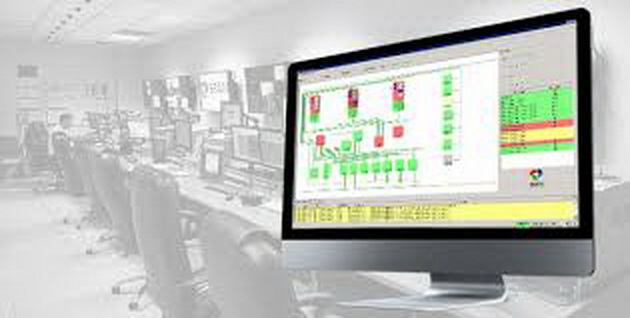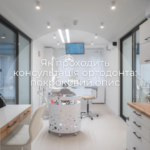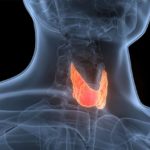In the modern world, dentistry is rapidly developing, moving from traditional methods to more innovative approaches. This transition requires doctors not only to acquire new knowledge, but also to use advanced technologies to meet the growing expectations of patients. The main focus is on an individual approach to each patient. This approach involves detailed diagnosis and taking into account the unique anatomical and physiological characteristics of each person. This requires accuracy not only in diagnostic procedures, but also in therapeutic manipulations.
Cyber-physical systems that integrate digital and physical aspects play an important role in this transformation. These systems not only aid in diagnosis, but also provide doctors with tools for more accurate and effective treatment. The use of such technologies as 3D visualization, robotic assistants, intelligent monitoring of the patient’s condition during procedures allows doctors to achieve much higher accuracy. This not only increases the effectiveness of treatment, but also reduces the risk of complications and increases patient comfort.
Despite significant advantages, the integration of cyber-physical systems into dental practice poses certain challenges. This includes the need to retrain staff, implement new data security protocols, and address ethical issues related to the use of such technologies. However, the potential of these systems in improving the quality of treatment and providing a more personalized approach to each patient makes them indispensable in the future of dentistry.
Fundamentals of cyber-physical systems
Cyberphysical systems (CFS) are an important component of modern technological developments, especially in the context of medicine and dentistry.
Definition of Cyber-Physical Systems: Cyber-Physical Systems are integrations of computational algorithms and physical components. They include hardware and software that interact closely with the external physical world and people. A key feature of CFCs is their ability to interact with the physical world through sensors and actuators , and to process information in real time, allowing them to adapt to changing conditions.
Application of cyber-physical systems in dentistry
Cyberphysical systems (CFS) are increasingly used in dentistry, especially in complex operations and management of the treatment process.
Robotic surgical equipment:
One of the most impressive examples of the use of CFCs is robotic surgical systems. They allow precise surgical manipulations to be performed with high precision, reducing trauma and patient recovery time. Such systems can be programmed to perform complex procedures, providing precision and consistency not available with manual intervention.
3D visualization and operation planning:
Using CFS, dentists can create detailed 3D models of a patient’s teeth and jaw. This allows precise planning of surgical interventions and prediction of possible outcomes. Virtual surgery planning uses scan data to create a personalized treatment plan that takes into account the patient’s unique anatomy.
Monitoring of the patient’s condition:
Sensors and other monitoring systems integrated into the CFS allow monitoring of the patient’s vital signs during surgery. This includes monitoring heart rate, blood pressure and blood oxygen levels. Real-time monitoring provides doctors with important information that allows them to quickly respond to any changes in the patient’s condition.
Intelligent diagnostic equipment:
Modern diagnostic systems that use CFS can automatically analyze X-ray images, detecting problems that may go unnoticed by manual examination. This significantly increases the accuracy of diagnosis and helps detect diseases in the early stages.
Automation and optimization of work processes:
CFCs are also used to automate routine tasks, freeing doctors from monotonous work and allowing them to focus on more complex aspects of treatment. Such automation not only improves work efficiency, but also reduces staff fatigue and increases the overall quality of medical services. The implementation of KFS in dentistry opens up new opportunities for increasing the accuracy, safety and efficiency of dental treatment. These systems contribute to the development of more advanced and patient-oriented approaches in medical practice.
Advantages and pitfalls of using cyber-physical systems in dentistry
The implementation of cyber-physical systems (CFS) in dental procedures has numerous advantages, but also faces certain challenges.
Advantages:
Increasing accuracy and efficiency. CFCs can significantly improve the accuracy of surgical interventions and diagnostic procedures. This allows you to reduce the risk of complications and increase the overall effectiveness of treatment. Automation of some procedures helps to shorten the treatment time and reduce the physical burden on the medical staff.
Personalization of treatment: Thanks to the ability to analyze large volumes of data, CFCs help develop individualized treatment plans, taking into account the unique characteristics of each patient. This contributes to more effective treatment and reduces the risk of side effects.
Improved patient experience: Using CFS can make dental visits less stressful and more comfortable for patients, especially through more accurate diagnosis and faster intervention.
Challenges:
Data security and privacy. Since CFCs collect and process large volumes of medical data, it is important to ensure their security and protection against unauthorized access. The issue of patient confidentiality becomes especially relevant in the context of the storage and transmission of sensitive information.
Integration with existing equipment. Integrating CFS with existing medical systems and equipment can be complex, requiring significant technical and financial resources. Interoperability of different systems and standardization of data are key aspects for successful integration.
Training and education of personnel. Implementation of CFS requires retraining of medical personnel so that they can effectively use new technologies. It is necessary to create appropriate training programs, which can be time and financially expensive.
Cost of implementation. Implementation of CFS may require a significant upfront investment, questioning their affordability for some dental practices, particularly in regions with limited funding.
Maintenance and support. CFCs require regular maintenance and updates, which may require additional resources and specialized expertise.
In conclusion, although cyber-physical systems offer significant benefits for dentistry, their implementation also comes with a number of challenges. Addressing these challenges requires attention to detail, planning and coordination between various stakeholders.
Gerasym L.М.
Dronyk I.I.
Departament of Surgical Dentistry and Maxillo-facial Surgery
Bucovinian State Medical Surgery
Migalchan T. I.
Fedkovych Chernivtsi National University













